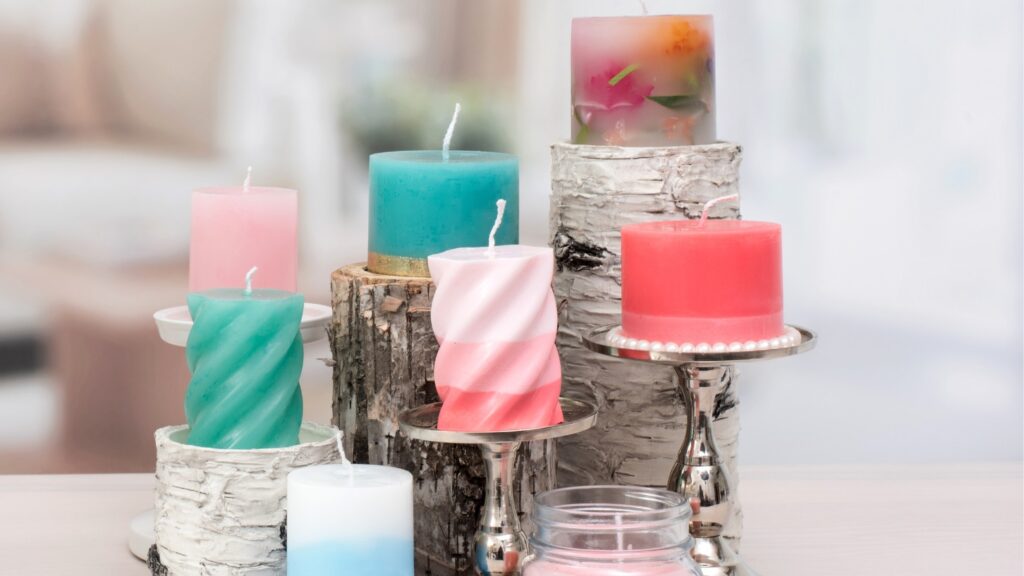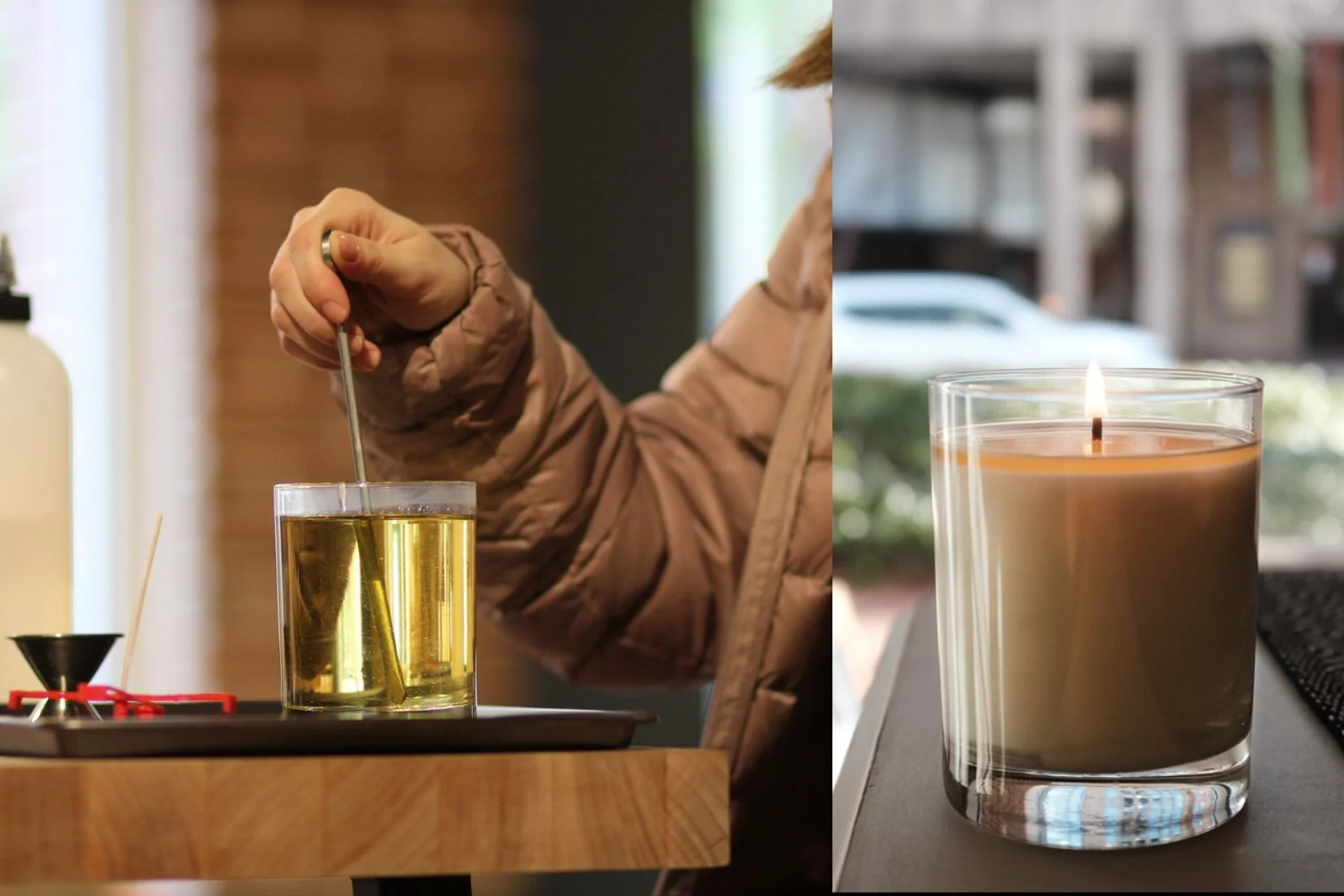Are you interested in starting a candle making project at home? If so, it’s important to find the best candle making supplies that will ensure the success of your DIY projects. Candle making is an enjoyable and creative hobby that allows you to express your artistic side while creating beautiful handmade candles. In this article, we will guide you through the process of finding the right supplies for your candle making endeavors.
Understanding the Basics of Candle Making
Before we dive into finding the best supplies, let’s first understand the basics of candle making supplies. The process involves melting candle wax, adding fragrance oils or essential oils for scent, and pouring the mixture into molds or containers with wicks. The wax then solidifies as it cools, resulting in a beautiful finished candle.
To create high-quality candles, it’s essential to use the right supplies, as they directly impact the overall appearance and burn time of your candles. Let’s explore the importance of quality supplies in candle making.
The Importance of Quality Supplies in Candle Making
Using high-quality candle making supplies ensures that your candles turn out beautifully and burn evenly. Inferior supplies may result in candles that don’t hold their shape, have poor scent throw, or burn unevenly. By investing in quality supplies, you can create professional-looking candles that will delight both yourself and anyone who receives them as gifts.
When it comes to candle making, the quality of your supplies can make all the difference. Let’s take a closer look at why:
- Consistency: High-quality supplies, such as premium wax and fragrance oils, provide consistent results. This means that each candle you make will have the same level of scent throw, burn time, and appearance. Consistency is key when it comes to creating a brand or establishing a reputation for your candles.
- Longevity: Investing in quality supplies ensures that your candles will have a longer burn time. This means that the recipient of your candle will be able to enjoy its beautiful glow and scent for a longer period. Longevity is a desirable trait in candles, as it adds value and enhances the overall experience for the user.
- Safety: Inferior supplies may pose safety risks, such as uneven burning or excessive smoke. High-quality supplies, on the other hand, are designed to burn evenly and emit minimal smoke, ensuring a safer candle burning experience. Safety should always be a top priority when creating candles, both for yourself and for those who will be enjoying them.
Now that we understand the importance of quality supplies, let’s take a closer look at the essential tools you’ll need for candle making.

Essential Tools for Candle Making
- Double Boiler: A double boiler is used to melt the candle wax gently and evenly. It prevents the wax from getting too hot or burning.
- Thermometer: A thermometer helps you monitor the temperature of the wax, ensuring it’s at the right temperature when adding fragrance oils or pouring into molds.
- Heat-Resistant Containers: Heat-resistant containers are necessary for pouring the melted wax. Glass jars or containers specifically designed for candle making work best.
- Stirring Utensils: Use heat-resistant spatulas or stir sticks to blend the wax and fragrance oils together without introducing air bubbles.
- Pouring Pitcher: A pouring pitcher makes it easier to pour the melted wax into containers or molds, ensuring a smooth and steady pour.
These essential tools are the backbone of any successful candle making endeavor. With the right supplies and tools, you’ll be well-equipped to create beautiful, high-quality candles that will bring joy and warmth to any space.
Different Types of Candle Wax and Their Uses
Next, let’s explore the different types of candle wax available and their various uses. Each type of wax has its unique characteristics and advantages, allowing you to choose the best option for your specific candle making project.
When selecting the ideal wax for your candles, it’s essential to consider factors such as burn time, scent throw, and eco-friendliness. Understanding the properties of each type of wax can help you create candles that meet your desired specifications and preferences. Read more about specifications at https://ii.library.jhu.edu/2018/04/11/what-is-specifications-grading-and-why-should-you-consider-using-it/
Paraffin Wax for Candle Making
Paraffin wax is a popular choice for candle making due to its affordability and ease of use. It has excellent scent throw and comes in various melting points, allowing you to create candles with different hardness levels. However, it’s important to note that paraffin wax is derived from petroleum, so it may not be the most eco-friendly option.
Despite its origins, paraffin wax remains a versatile option for candle makers looking to experiment with different colors and scents. Its ability to hold fragrance oils well makes it a favorite for those seeking strong-scented candles that can fill a room with delightful aromas.
Soy Wax for Candle Making
Soy wax is a natural alternative to paraffin wax and is made from soybean oil. It is renewable, biodegradable, and produces a clean-burning candle. Soy wax also holds fragrance well and has a smooth and creamy appearance. It’s a great choice for environmentally-conscious candle makers.
One of the unique characteristics of soy wax is its ability to burn at a lower temperature, which can result in a longer-lasting candle. Additionally, soy wax is known for its ability to release fragrance slowly, providing a more subtle and consistent scent experience throughout the candle’s lifespan.
Beeswax for Candle Making
Beeswax is another natural wax option that is popular among candle makers. It is derived from bees and has a lovely natural scent. Beeswax candles burn cleanly and slowly, and they are often prized for their natural beauty. However, beeswax can be more expensive compared to other waxes.
In addition to its pleasant aroma, beeswax is known for its natural air-purifying properties when burned, making it a popular choice for those looking to create a calming and soothing atmosphere in their living spaces. The golden hue of beeswax also adds a touch of elegance to candles, making them not only functional but also visually appealing as decorative items.
Selecting the Right Wicks for Your Candles
Now that we’ve covered wax options, let’s move on to selecting the right wicks for your candles. Wick selection is crucial, as it determines how well your candles burn and how long they last.
When it comes to choosing the right wick for your candles, it’s essential to consider not only the size but also the material of the wick. The material can impact how the wick burns, the size of the flame, and even the scent throw of your candle. Different wick materials can also affect the burn time and overall performance of your candle.
Understanding Wick Sizes
Wick sizes are determined by their diameter, and the right wick size will depend on the diameter of your container or mold. Using the wrong wick size can result in tunneling or excessive smoking. It’s essential to consider the diameter of your candles when choosing wicks. Click here to learn more about smoking.
Additionally, the length of the wick can also play a role in how your candle burns. A wick that is too short may drown in the wax, leading to an incomplete burn, while a wick that is too long can cause the candle to burn too hot. Finding the right balance between wick size and length is key to achieving a clean and even burn.
Types of Candle Wicks
There are various types of candle wicks available, including cotton wicks, wood wicks, and zinc-core wicks. Each has its own unique burning characteristics. Cotton wicks are the most common and come in different styles and sizes. Wood wicks add a crackling effect to your candles, creating a cozy ambiance. Zinc-core wicks are often used for larger candles or those that require a higher melt pool.
Aside from the material and size, the construction of the wick also plays a role in how it performs. Some wicks are braided, which can help reduce carbon buildup and maintain a stable flame. Others may have a different core structure to enhance rigidity and prevent mushrooming. Understanding the construction of the wick can help you choose the right one for your specific candle-making needs.
Choosing the Best Fragrance Oils
In addition to selecting the right wax and wicks, fragrance oils play a significant role in candle making. They add a delightful scent to your candles, creating an inviting atmosphere in any space. Let’s explore how to choose the best fragrance oils.
When it comes to fragrance oils, the options are vast and varied, ranging from floral and fruity to woody and spicy scents. Each fragrance oil has its unique characteristics and strengths, allowing you to unleash your creativity and customize your candles to suit any mood or occasion. Whether you prefer the fresh aroma of lavender fields or the warm embrace of vanilla, there is a fragrance oil out there to fulfill your olfactory desires.

How to Pair Fragrance Oils
When selecting fragrance oils, it’s important to consider how different scents complement each other. Experiment with blending different fragrances to create unique and captivating scents. Keep in mind that some fragrances may perform better with certain waxes, so it’s essential to do a small test batch before making a larger quantity.
Creating the perfect scent combination is both an art and a science. Understanding the fragrance pyramid, which consists of top, middle, and base notes, can help you craft well-balanced and harmonious scents. Top notes are the first scents perceived when the candle is lit, followed by the middle notes that emerge as the candle burns, and finally, the base notes that linger after the candle has been extinguished. By strategically pairing fragrance oils from each category, you can create complex and intriguing scents that evolve over time.
Safety Considerations for Fragrance Oils
While fragrance oils can enhance the candle-making experience, it’s crucial to follow safety guidelines. Some fragrance oils may have specific usage rates or flashpoints, so be sure to read the manufacturer’s instructions. Wear protective gloves and goggles when handling fragrance oils, and work in a well-ventilated area to avoid exposure to potentially harmful chemicals.
Additionally, it’s important to store fragrance oils properly to maintain their potency and integrity. Keep them away from direct sunlight and extreme temperatures, and ensure that the containers are tightly sealed to prevent evaporation. By handling fragrance oils with care and respect, you can enjoy the creative process of candle making while prioritizing safety and well-being.
Candle Molds and Containers
The last element to consider when finding the best candle making supplies is the choice of molds and containers. The right mold or container can enhance the aesthetic appeal of your candles.
Silicone Molds for Candle Making
Silicone molds are a popular choice for candle making due to their flexibility and ease of release. They come in various designs and sizes, allowing you to create intricately shaped candles.
Glass Containers for Candle Making
Glass containers can give your candles a classic and elegant look. They come in different shapes and sizes, providing endless possibilities for creating beautiful candles. Ensure the glass containers are heat-resistant and have a stable base to prevent accidents during burning.
Now that you have a better understanding of the different supplies needed for candle making, you can confidently embark on your DIY candle projects. Remember, choosing high-quality supplies and experimenting with different combinations will lead to stunning, personalized candles that you can enjoy or give as thoughtful gifts. Start gathering your candle making supplies today and let your creativity shine!
Other resources: Top 5 Best Candle Making Kits Australia Has to Offer

